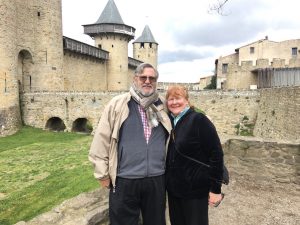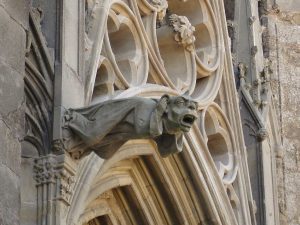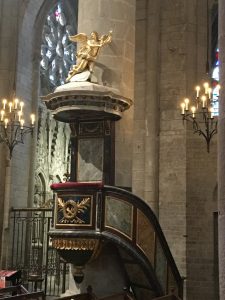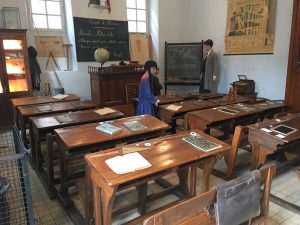Carcassonne – A medieval city in the south of France was our next stop. This medieval walled city sits in the luscious valley of the Aude River – the gap between the Pyrenees and the Massif Central mountains of southern France. Slate roofs glint in the sun atop 13th century towers that dominate the horizon.

Surround by mountains and vineyards this fortified city surrounds 2500 years of history. Carcassonne became identified when the Romans fortified the hilltop around 100 BC. Over the next 1000 years or so it continued its prominence. In 1067 it became the property of Raimond-Bernard Trencavel the viscount of Albi and Nimes. Located along the then French boarder with Spain, it was a central spot for defense of the region. In 1659 this all changed. The Treaty of the Pyrenees moved the boarder well south and Carcassonne’s military significance was greatly reduced.


The fortifications were abandoned and left to decay. Napoleon basically struck Carcassonne off the map when he declared it not worth caring for. This caused such an uproar that the local mayor convinced the Inspector of Ancient Monuments to reconsider and Carcassonne was made a historical monument allowing it to receive funds and be restored.
The use of internal Wells and food storage is reminiscent of Moorish fortification more than Western Europe or Roman construction, including the double walls.


Shops provide child size shields, swords, helmets and other fantasy of the knight objects. The actual Knights who chose this fortification were cruel defenders of the Inquisition of the Cather’s, a religious group which questioned Papal authority, or rampaging armies who sought land and wealth for smaller kingdoms. (Battle of Crecy).

Despite the 1659 border change, the Catalan/Spanish influence remains in the language of visitors, the food specialties, and the Pyrenees visible on a clear day.


Carcassonne is the second most visited National Monument of France, right behind Mont Saint Michel, which we visited in December.


The stained glass in the Basilica of Saint-Nazaire is dazzling, even on an overcast day.





The Museum of schools offered an opportunity to try out the pen and ink,




and the class pictures were reminiscent of photos of farm schools such as my father attended in the 20s and 30s, with all ages lined up in one room.



We chuckled a bit at the sign on the Chateau, closed for the day.
